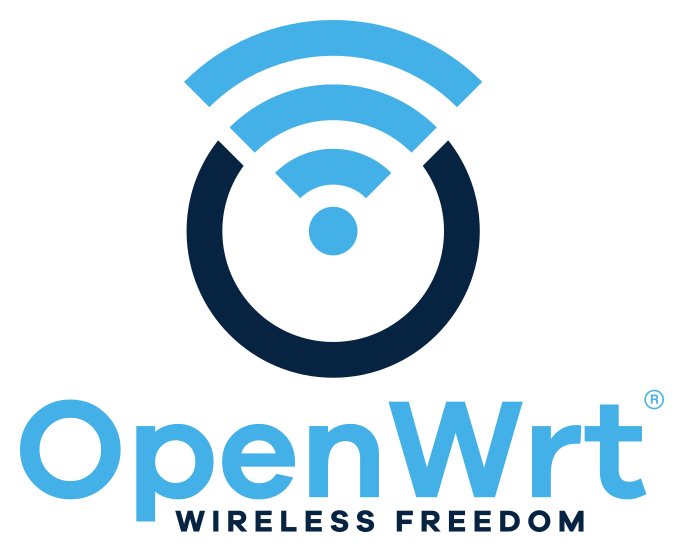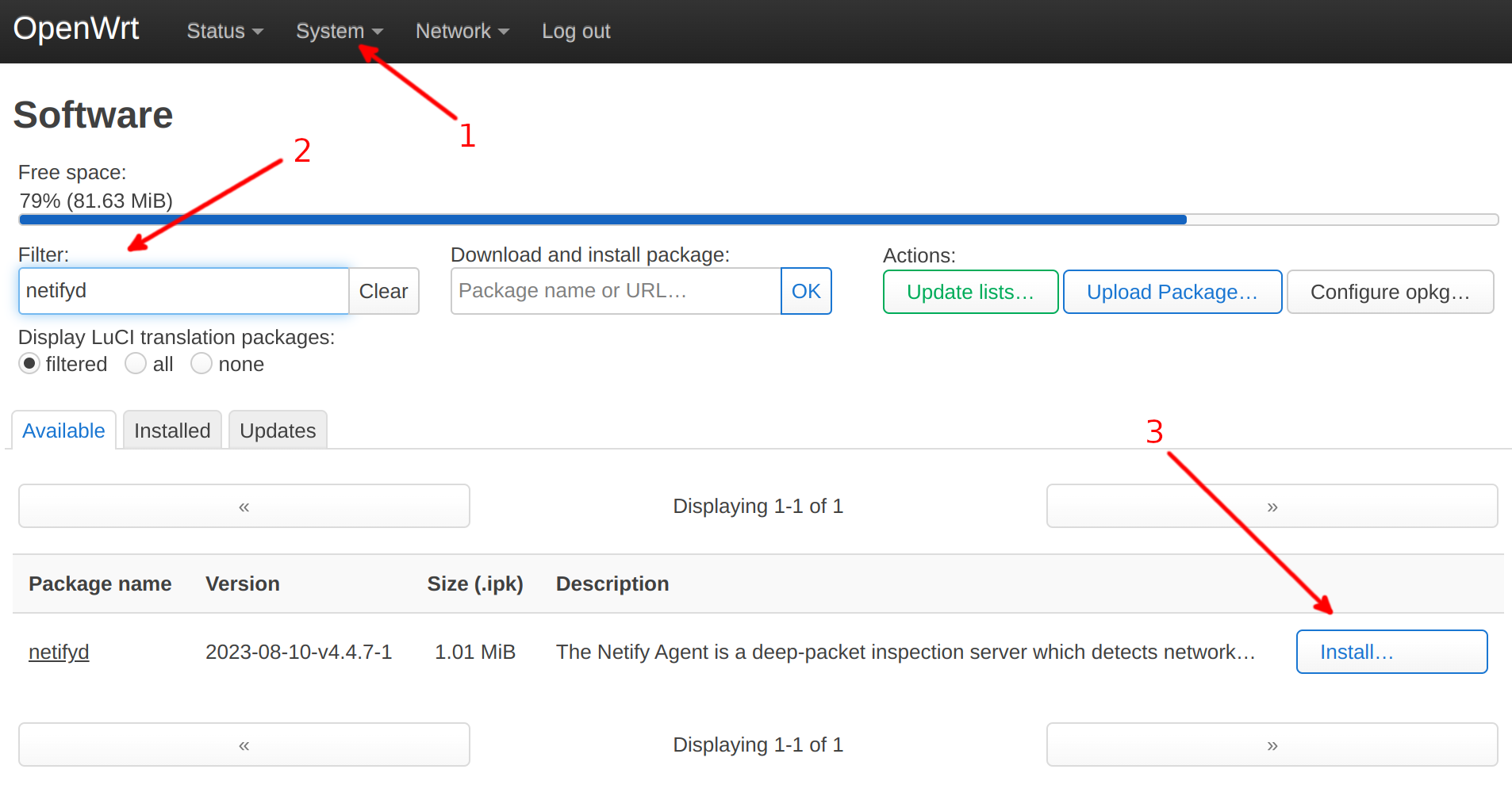OpenWRT
Installation
- Requirements
- OpenWRT Software Package Repository
- Adding the Netify Custom Feed vs Command Line
- OpenWRT 23.05
- OpenWRT 22.03
- OpenWRT 21.02
- OpenWRT 19.07
- System Integrator and Edge Device OEM
- Post Installation
- Netify Informatics
Requirements

OpenWRT's underlying software is ubiquitous in edge gateway computing - especially on smaller footprint devices. It is used by OEM's like GLiNet as well as reference platforms from organizations like the prpl Foundation.
In this role, the system will need at least 2 network interfaces:
- Network Interface #1: used to access the operating system and Netify
- Network Interface #2: used to ingest port mirror traffic from LAN segment 1
- Network Interface #N: used to ingest port mirror traffic from LAN segment N (optional)
Depending on the amount and type of network traffic, a minimum of 256MB RAM is required.
OpenWRT Software Package Repository

Like many distributions, OpenWRT has it's own software package repository. It contains thousands of packages to extend the functionality of OpenWRT. The Netify agent was accepted into the OpenWRT ecosystem in 2019 and continues to be supported today. It makes it very easy to install Netify, either from Luci or the command line (see below).
OpenWRT 23.05
Luci

Step 1 - Using Luci, navigate to System → Software
Step 2 - In the "Filter" input, search on netifyd
Step 3 - Click on the Install button next to the Netify package
Command Line
opkg update
opkg install netifydOpenWRT 22.03
OpenWRT 21.02
OpenWRT 19.07
System Integrators and Edge Device OEM
If you are a system integrator or OEM of an edge computing device and would like to incorporate the Netify agent into your software stack, please contact us. Our team routinely compiles Netify source code (both open and proprietary) using your custom buildroot environment.
Post Installation
After installing the agent, verify the installation and some path information using the -s (status) argument.
netifyd -s
Netify Agent/4.4.7 (openwrt; x86_64; conntrack; netlink; plugins; regex)
✓ agent is running.
• persistent state path: /etc/netify.d
• volatile state path: /var/run/netifyd
• agent timestamp: Tue Mar 12 17:19:36 2024
• agent uptime: 0d 03:14:00
✓ active flows: 8
• CPU cores: 1
✓ CPU utilization (user + system): 0.1%
✓ CPU time (user / system): 0.0s / 0.0s
• maximum memory usage: 15124 kB
! br-lan [LAN]: initializing: packets (dropped / total): 0 / 0
✓ eth0 [WAN]: online: packets (dropped / total): 0 / 45
✓ DNS hint cache: enabled
• DNS hint cache entries: 0
• sink URL: https://sink.netify.ai/provision/
✗ sink services are disabled.
To enable sink services, run the following command:
# netifyd --enable-sink
✗ sink uploads are disabled.
To enable sink uploads, ensure your Agent has been provisioned.
✓ sink agent UUID: TT-FZ-26-34
! sink site UUID is not set.
A new site UUID will be automatically set after this agent has been provisioned by the sink server.Netify Informatics

- Device Identification and Management
- Cybersecurity Risk
- Forensics
- Regulatory Compliance
To learn more about Netify Informatics, click here.
After installing the agent, run the following two commands:
netifyd --enable-sink
netifyd -p